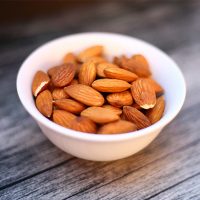
Many foods we eat daily are contaminated with arsenic, a known poison and carcinogen. Rice is one of those foods and for this reason, many health-conscious consumers are now exploring alternatives such as quinoa. But, does quinoa also contain arsenic or is it arsenic-free? What levels of arsenic can you find in quinoa vs rice? In this article, we try to answer these questions.
How does arsenic get into food?
First of all, let’s take a look at how arsenic gets into food.
Arsenic is a natural compound found in the earth’s crust but it also gets into soil where food crops are grown through various means.
Although arsenic is a natural compound it is highly toxic in its inorganic form (not so toxic in organic form). Inorganic arsenic forms when it gets combined with other elements.
Inorganic arsenic compounds found in the soil are often the result of human activities, such as pesticide use, burning coal and waste disposal.
In some cases, arsenic gets into the soil when crops are irrigated with arsenic-contaminated water.
When our food grows in arsenic-contaminated soil, it absorbs a certain amount of arsenic. This is how arsenic gets into our food. However, certain plants accumulate more arsenic than others due to the way they are cultivated. One such example is rice which needs to be grown in a certain depth of water to flourish.
Arsenic in quinoa
The way quinoa grows is very different from how rice is cultivated. Quinoa doesn’t need a continuous water supply to flourish and since it doesn’t have to stay in the water (often contaminated with arsenic), there is a lesser chance of it accumulating high levels of arsenic.
However, since arsenic is found in nature and is often accumulated in the soil as a result of pollution and other human activities, quinoa also gets contaminated.
Consumer Reports have investigated arsenic levels in quinoa among other non-rice grains (although quinoa is technically a seed) and discovered that quinoa has average inorganic arsenic levels. However, some quinoa samples had much higher arsenic levels than that.
Arsenic in rice vs quinoa
Based on the Consumer Reports report, quinoa contains much less arsenic than rice.
Another report, from FDA, looking at arsenic levels in infant/toddler foods showed that quinoa had an average of 7.9 ppb (parts per billion) of inorganic arsenic (30 samples). In comparison, rice cereals (76 samples) had an average of 103 ppb of inorganic arsenic.
The FDA has issued guidance for infant rice cereal not to exceed inorganic arsenic levels of 100 ppb and quinoa samples they analysed are well below that level. In the same study, the FDA has also analysed levels of arsenic in raisins and just for a comparison, raisins samples contained similar amounts of arsenic to quinoa (8.1 ppb).
How to remove arsenic from quinoa
Although you cannot completely remove arsenic from any of the foods, you can take steps to reduce its levels.
First of all, make sure you wash quinoa very well before cooking. Rinse it multiple times in a big bowl of water.
To cook quinoa, use plenty of water and don’t let quinoa boil dry. Once cooked (after about 15-20 minutes), drain the water and don’t re-use it as this is where arsenic leached.
It may also be beneficial to soak quinoa in water overnight to allow more arsenic to escape. This is proven to work with rice but we couldn’t find any information about this working on quinoa.
Final thoughts
Although quinoa does contain arsenic, the levels are not high compared to rice. The amount of arsenic in quinoa is comparable to the amount found in raisins. You can decrease the arsenic levels in quinoa by washing it well and cooking it in plenty of water.



